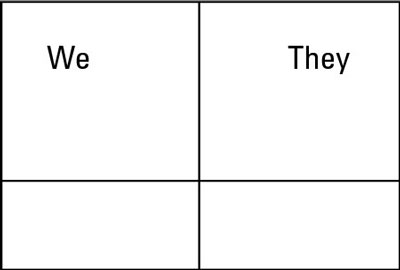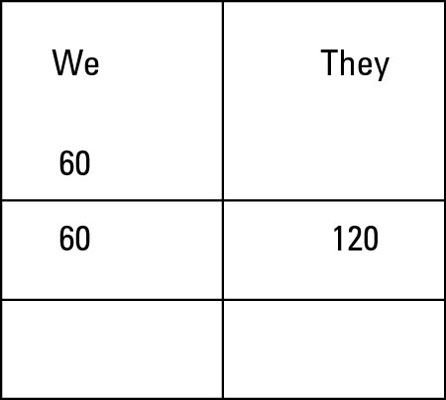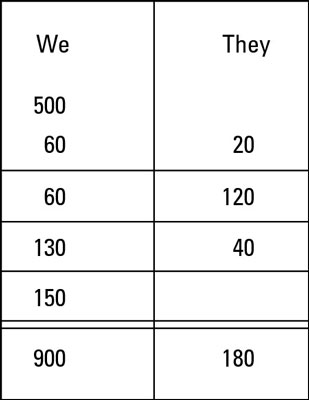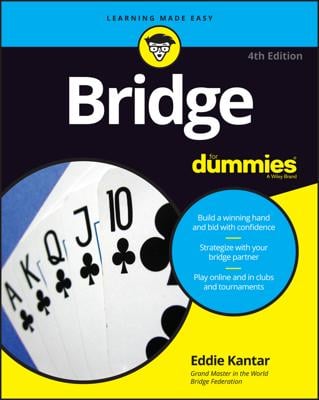When scoring a rubber, think of yourself and your partner as “We” and the opponents as “They.” This is the standard notation used for scoring at bridge.
Normally, everyone keeps a score of the rubber in front of them so they can see how the rubber is progressing and how many points they need to make game. You can keep score on just about anything, but bridge score pads are easily available if you'd rather not draw some lines on a piece of paper for yourself.
How to draw a score pad: beneath the line
The whole process starts by drawing a line so your score pad looks like the one shown in this image:
Beneath the horizontal line goes your score toward game (the 100 scoring points you’re seeking); above the line go the following:
-
Your overtricks
-
The penalty points you pick up when your opponents don’t make their contract
-
Various bonuses you can pick up, such as for winning the rubber
How to draw a score pad: above the line
Compared to what goes on beneath the line, what goes on above the line is child’s play. Looking beneath the line tells you where the real action is. Here are some basics of scoring a rubber:-
When either side makes a contract, the trick score for the bid goes under the line; the score for any overtricks goes above the line.
-
The number of points that you score under the line dictates how high you need to bid (how many more points you need) to make a game. Conversely, you need to track your opponents’ position as well to know what contract would be game for them — if they make it, of course.
-
During the play of a rubber, partscores count toward making game. However, after one partnership makes game, the other partnership loses its partscore, if it has one. If you lose your partscore, you have to start all over toward making game!
-
After either side scores 100 or more points beneath the first line, you draw a new line, indicating that a game has been bid and made (refer to this image). Now both sides have to start all over to score 100 points because neither side has any points under the new bottom line.

-
When you eventually add everyone’s score at the end of the rubber, it doesn’t matter whether the scores are above or beneath the line; the points all count the same. But during the rubber, what’s under the bottom line is important because it tells you whether either side has a partial score toward game.
Bonus points
You can score bonus points for any of the following situations:-
If a hand is played at notrump and any one of the four players has all four aces, that team gets a bonus of 150 points above the line.
-
If a hand is played at a suit contract and any one player has four of the top five trump honors (AKQJ, KQJ10, AQJ10, AKJ10), that team gets 100 points above the line, called 100 honors.
-
If any one player has all five trump honors (AKQJ10), that’s worth a 150-point bonus above the line, called 150 honors.
These bonuses go above the line; they don’t help you win the rubber. In a sense, these bonuses reward you solely for the luck of being dealt particular cards. Declare the bonus points for honors only at the end of the hand, before the next hand begins. Don’t declare them during the play of the hand because it gives the opponents (and your partner) too much information about your hand.
Adding up the points
After a partnership wins the rubber (by making two game contracts), both sides add the total number of points they scored during the rubber. You get to count all the points, regardless of whether they are above or below the line.After the rubber has been won, you draw a double line after the last game score and add both partnerships’ total points for the rubber. You add all the points, both below and above the line, and enter the total below the double line. The score sheet for the sample rubber now resembles this image.


